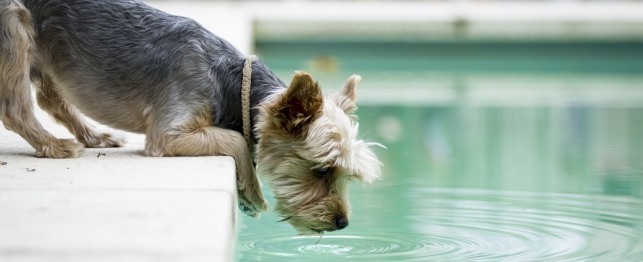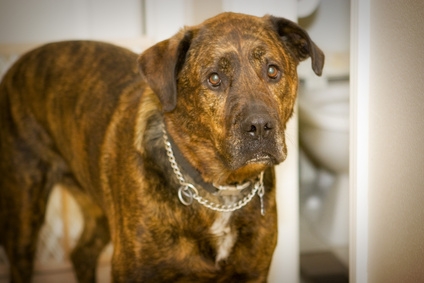When it comes to puppy training, most people try a variety of methods before they find one that is completely useful for them. One method that has become very popular in recent years is the use of the head collar when leash training puppy.
A head collar is a collar that slips over the muzzle of the puppy as well as the neck, before it is attached to the lead that you are holding. The collar is restraining, but still allows the puppy plenty of room to bark, eat, drink and open his or her mouth. However, what makes this form of leash training ideal for leash training puppy is the fact that if you apply pressure, the head collar will tighten to close the mouth and further restrain the puppy.
The design of this head collar for leash training puppy applications is ideal because there is a collar wrapped around the neck even if the part wrapped around the muzzle of the dog is slipped off. In other words, the collar on the neck serves as a back up device of sorts. Head collars teach dogs to instinctively react to the pressure on their muzzles.
If you use a head collar for leash training puppy, this will show your dog that you're the boss quickly and easily. This will let you use your time for other things. Dog trainers often turn to using head collars because they teach a method of correction for behavior that is outside what is normally used for corrective technique. Head collars are also useful when leash training more aggressive dogs because the muzzle loop can be used as a precautionary measure.
When leash training puppy, during the process there are also other advantages to using a head collar. Head collars are simple to use and make puppy training easy because you don't need to use painful or threatening corrections, but still can get great results. In addition, if a puppy has problems pulling on the leash while you're walking, this collar will help deter them from doing so.
There are a variety of different puppy training situations in addition to leash training where the head collar would be useful, including adding distractions to training. With a head collar, the allure of other puppies in the room can be ignored because it will allow you to keep and hold the upper hand when working with your puppy.
Just keep in mind that the head collar also comes with its own list of disadvantages. For example, a puppy can be lured into dependency if you use the head collar as a means of tempering their behavior often. If you switch to a traditional collar from that point, you could see bad behavior crop up again. Some dogs do not like the head collar itself and may do everything humanly possible to get it off. Your dog could hurt itself if it tries to remove the collar the wrong way.
Be an informed owner when you are training your puppy with a head collar. If you're not, you could make poor decisions when you use the collar on your puppy. The head collar is not a muzzle and should always still let a puppy fully move his or her mouth. It's fortunate that products like these have more advantages than they do disadvantages. If you are willing to learn how to use a head collar correctly for your puppy's training, you will have good results.

 7 Summer Dangers to Your Dog
7 Summer Dangers to Your Dog
7 Summer Dangers to Your Dog
7 Summer Dangers to Your Dog
 Introducing A New Puppy to Other Pets
Introducing A New Puppy to Other Pets
Introducing A New Puppy to Other Pets
Introducing A New Puppy to Other Pets
 How to Put Muscle Weight on a Dog Fast
How to Put Muscle Weight on a Dog Fast
How to Put Muscle Weight on a Dog Fast
How to Put Muscle Weight on a Dog Fast
 A Veterinarians Advice for New Puppy Parents
A Veterinarians Advice for New Puppy Parents
A Veterinarians Advice for New Puppy Parents
A Veterinarians Advice for New Puppy Parents
 How to Gently Put Down a Dog
How to Gently Put Down a Dog
How to Ge
How to Gently Put Down a Dog
How to Gently Put Down a Dog
How to Ge